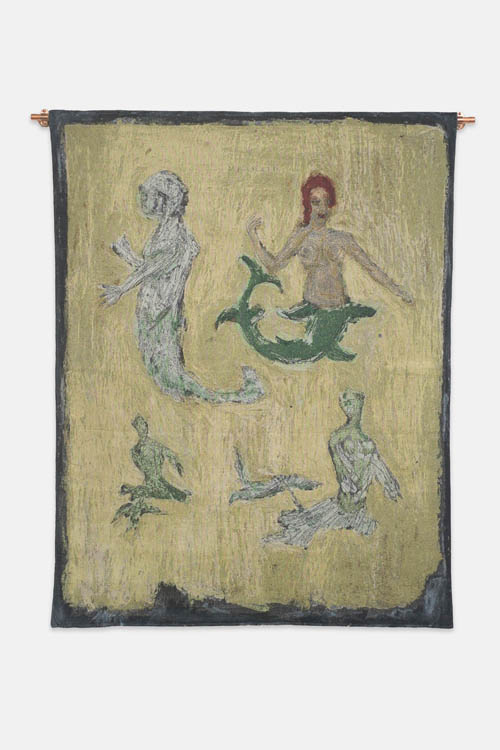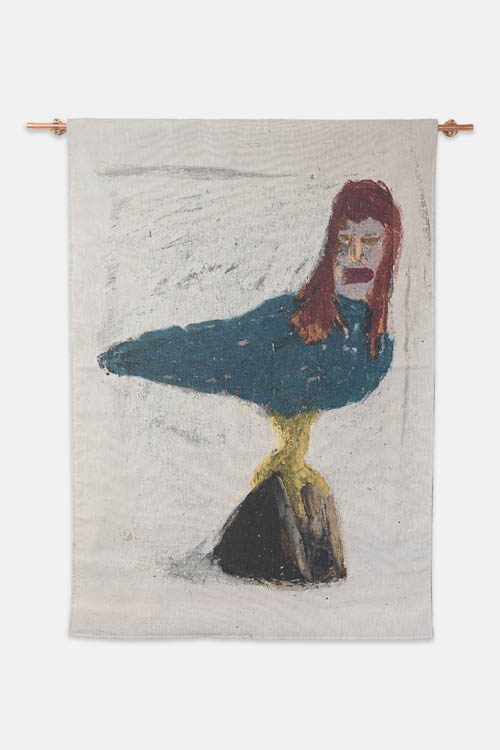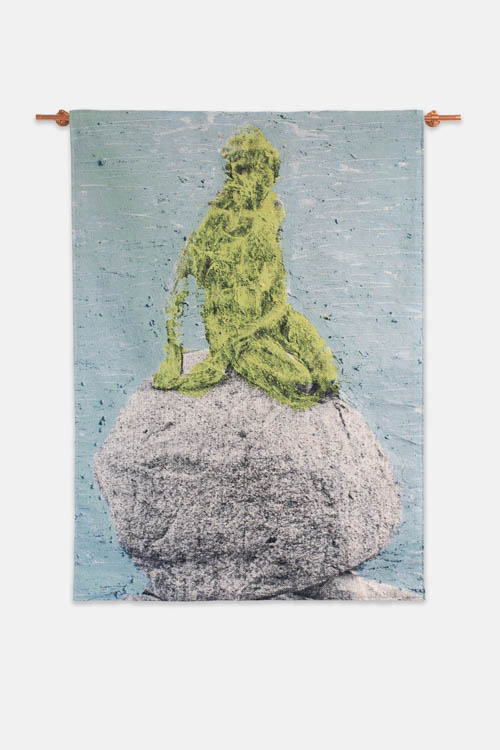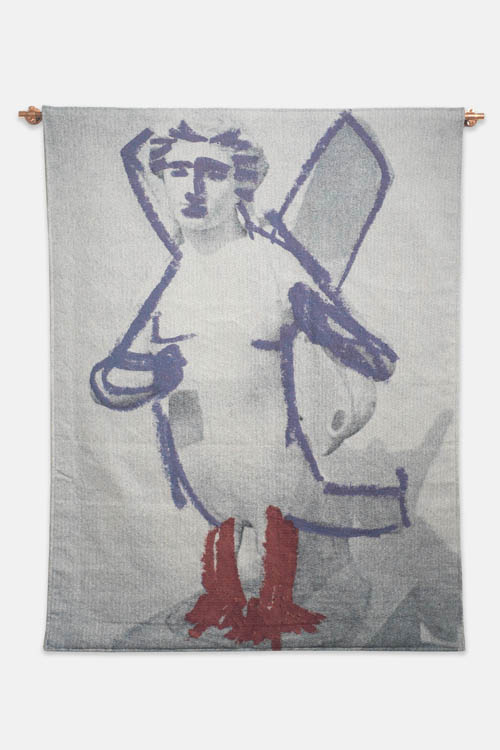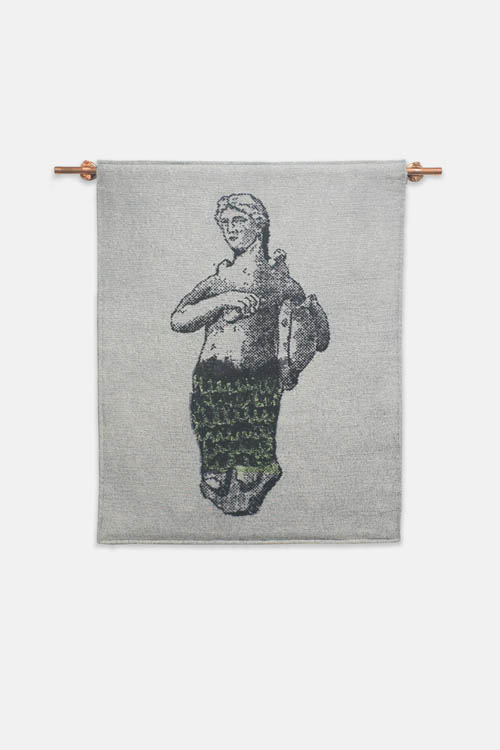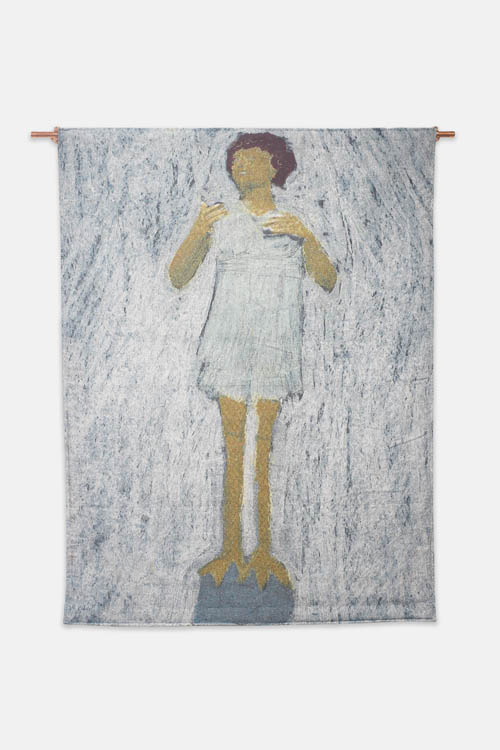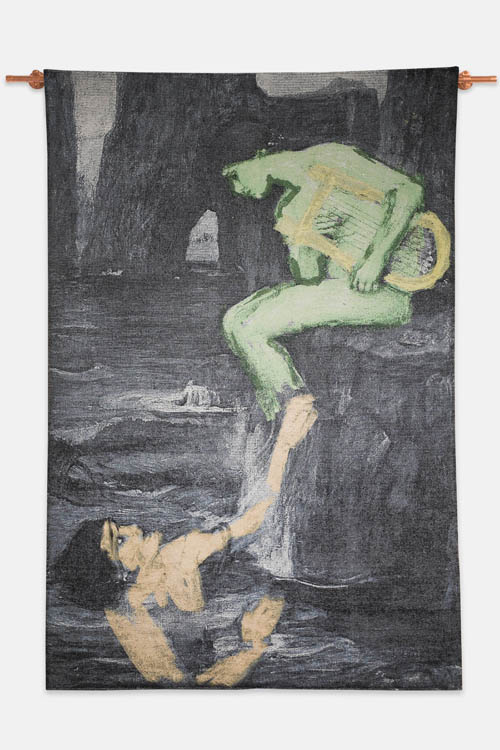Sirens, Silencers, Mufflers, and Mutes
Whitney Lynn
5.29.2019 - 7.13.2019
Opening Reception 6.1.2019 from 5-8pm
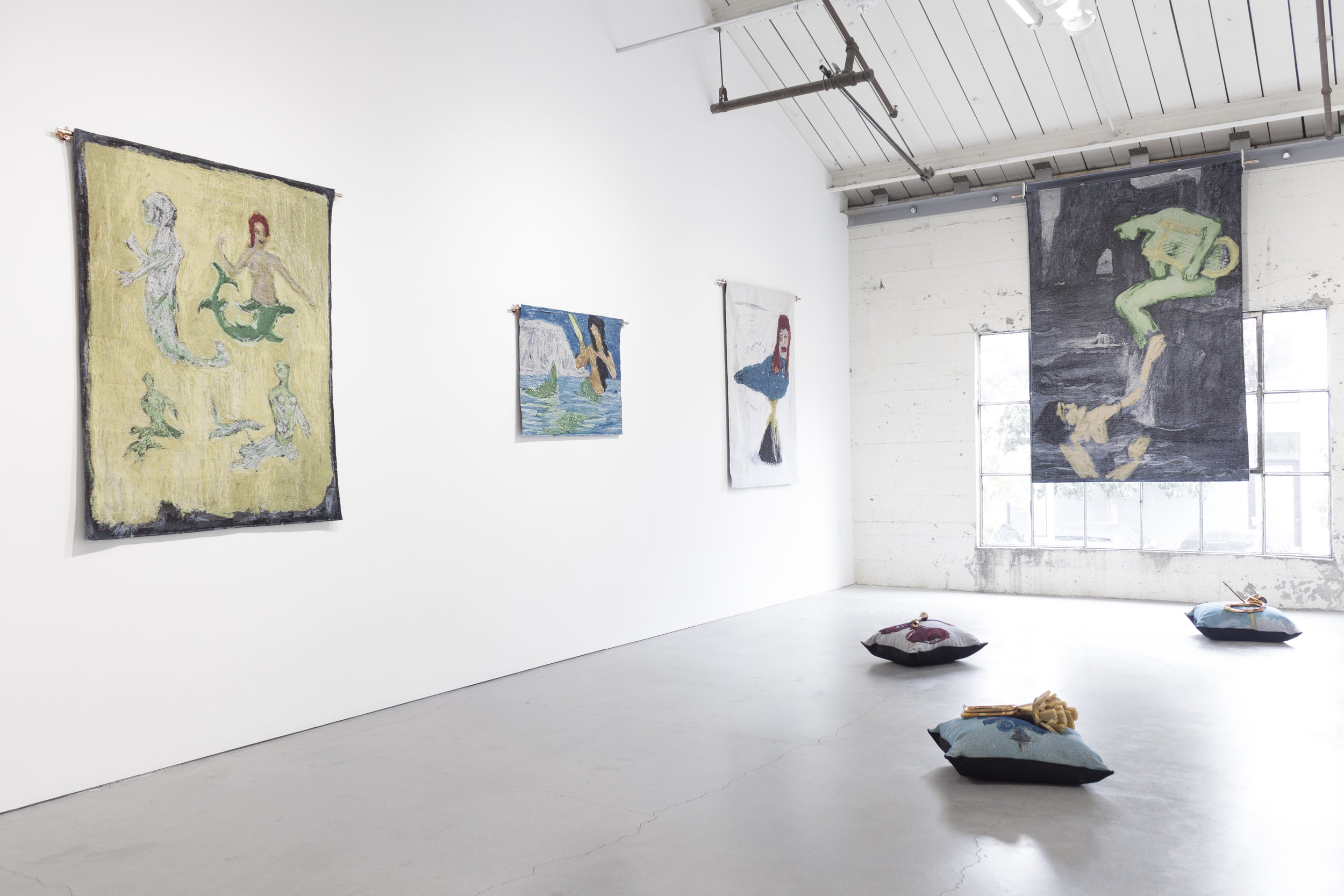
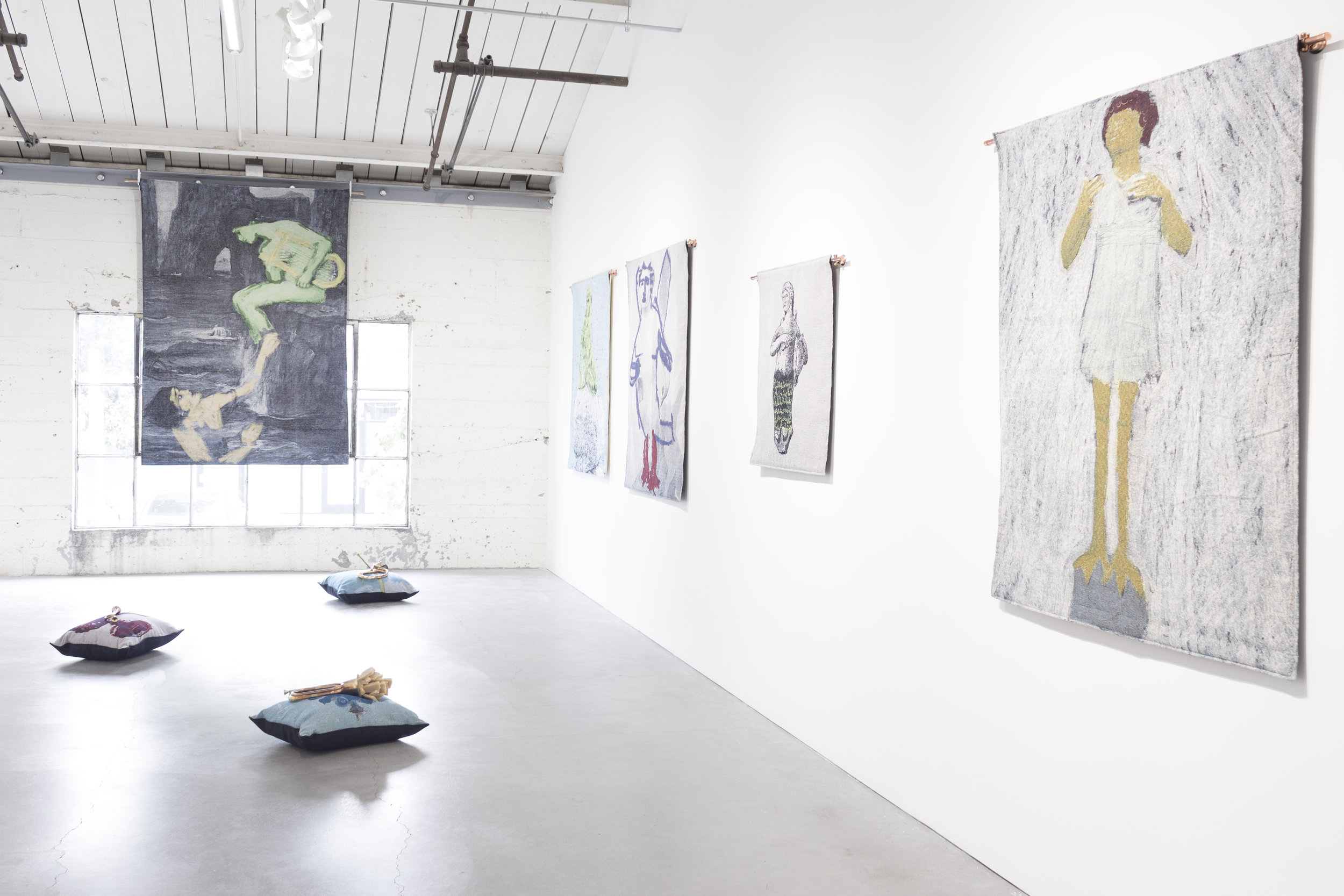
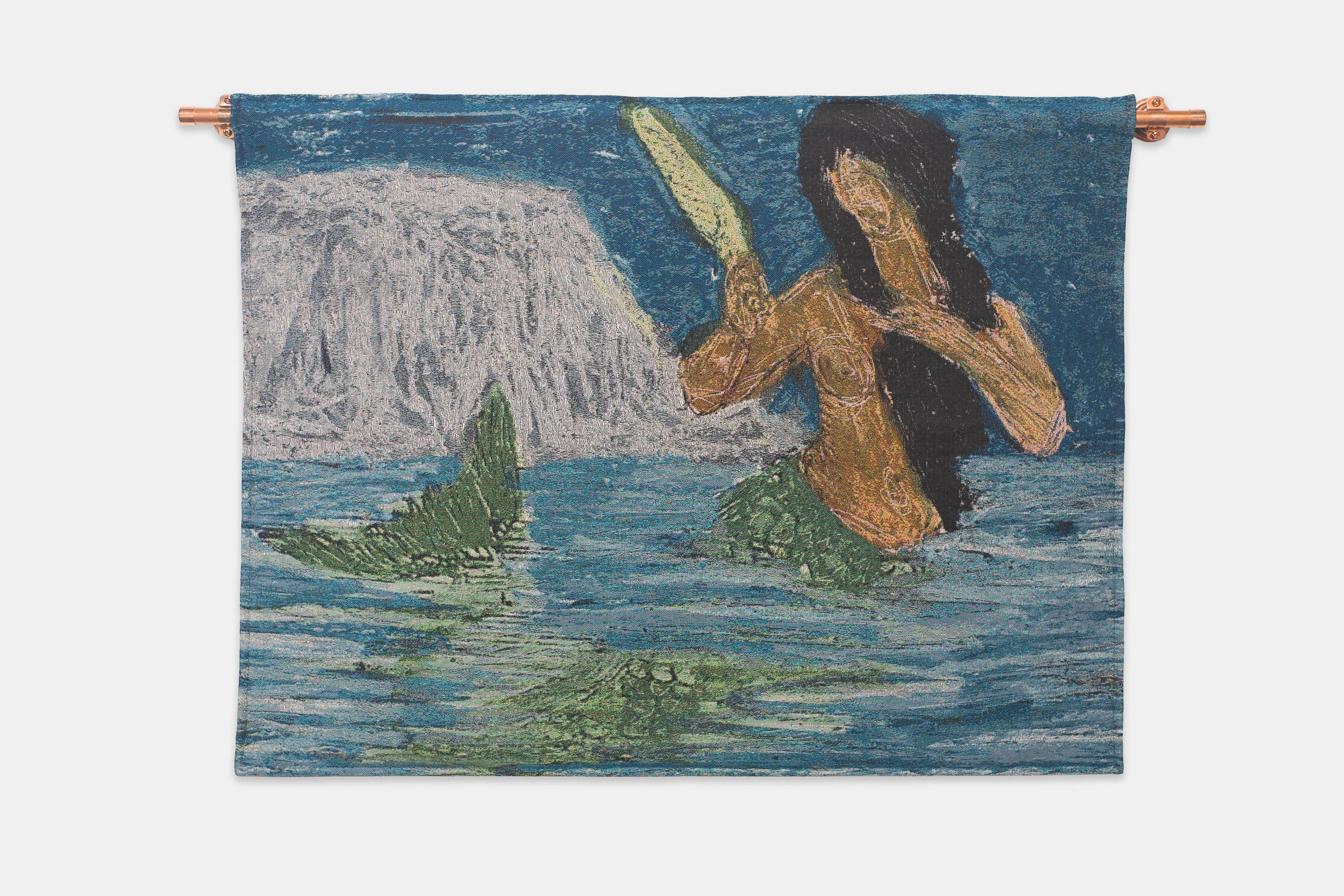
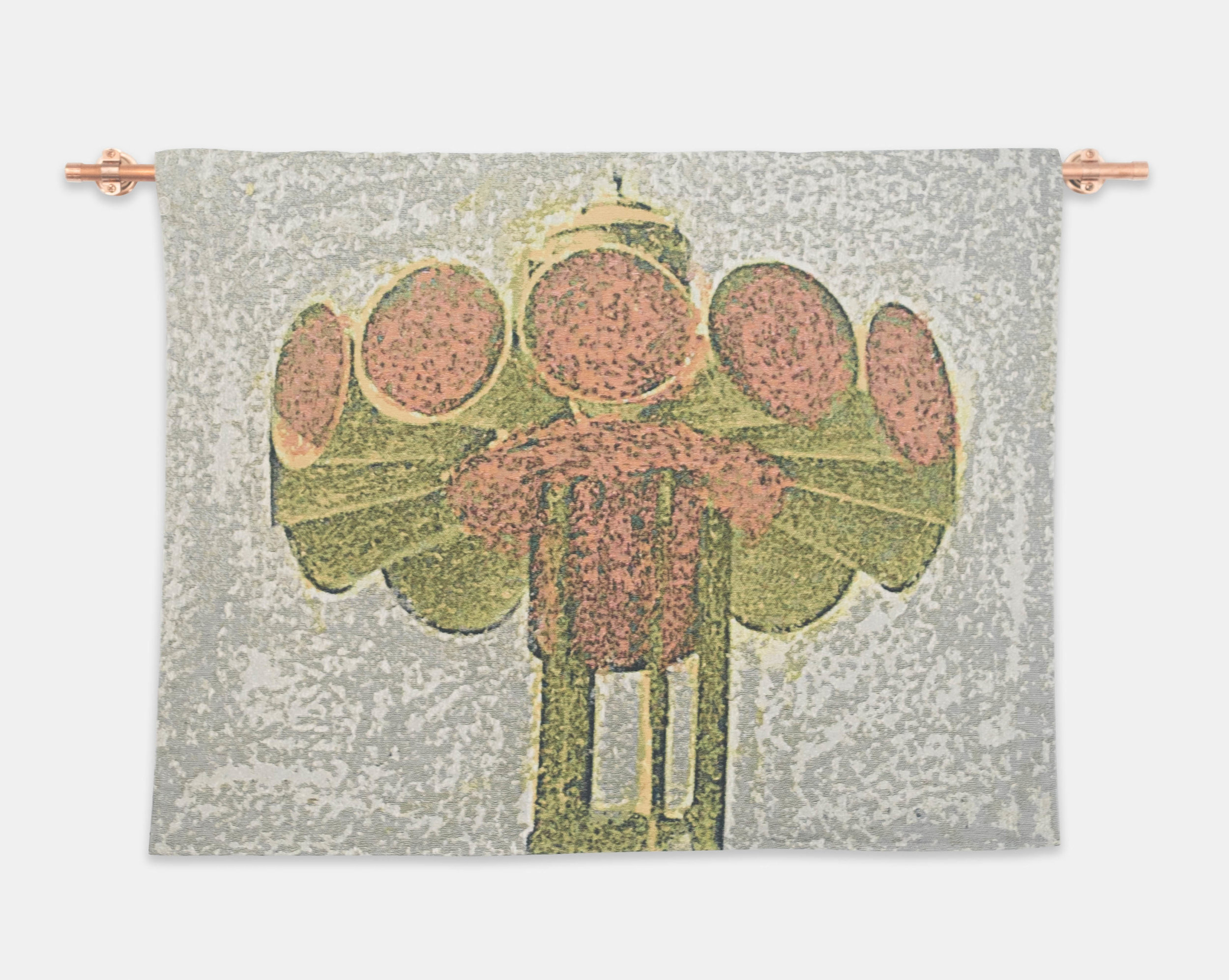

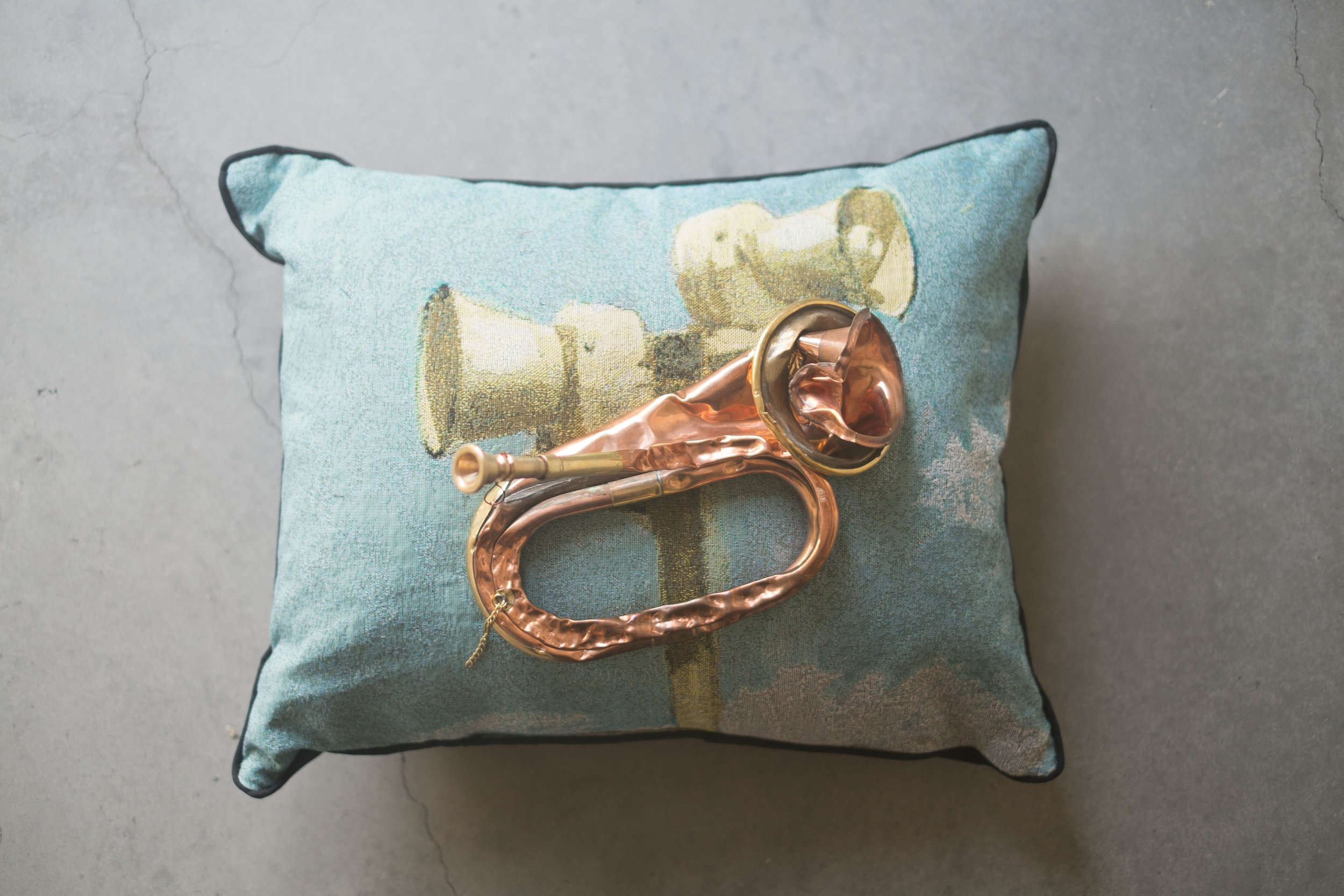
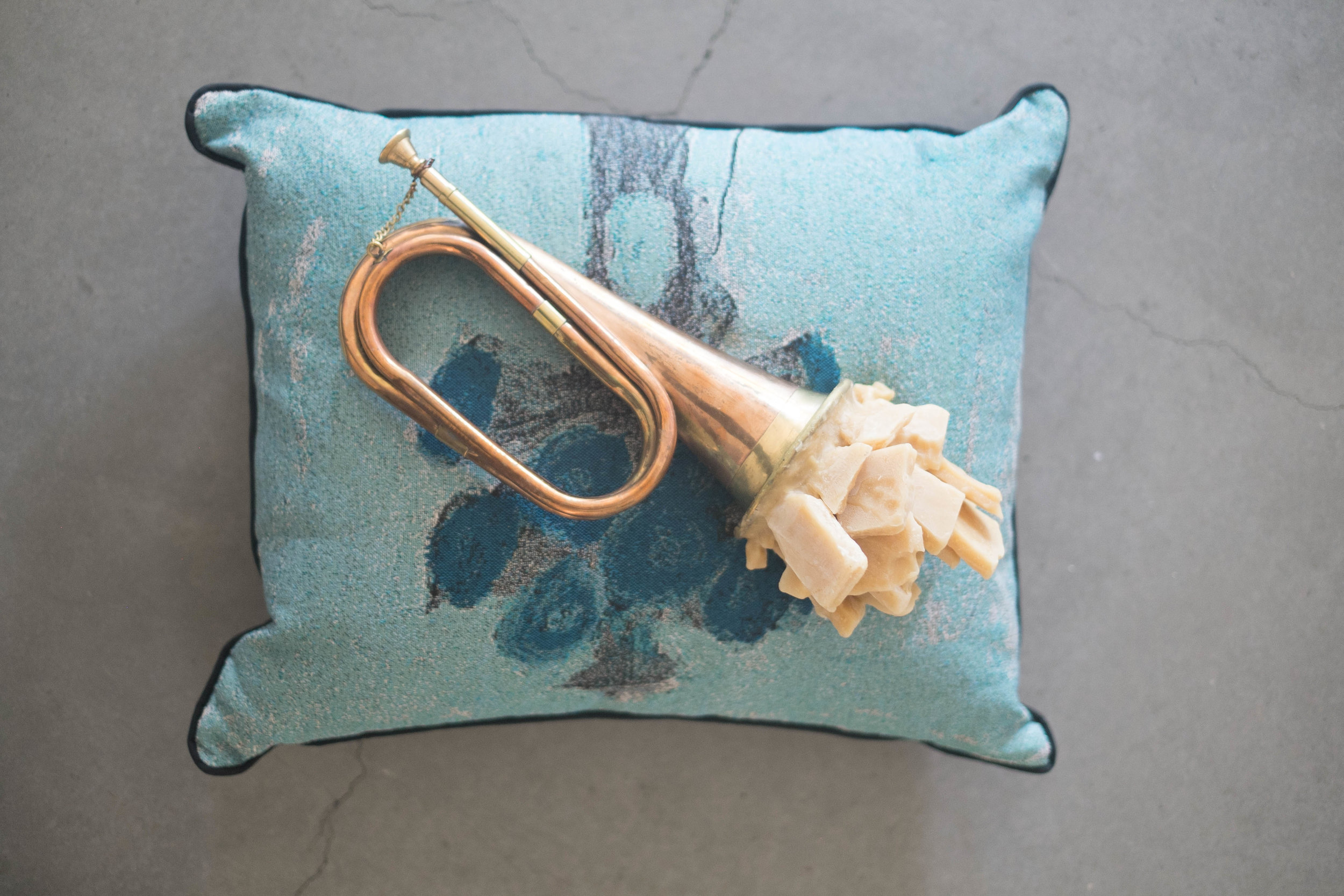
For the last seven years Whitney Lynn’s conceptual practice has focused on the idea of traps. Beginning with devices designed to deceive in order to apprehend, such as fishing lures and hunting decoys, the work eventually morphed to deal with historical and mythological femme fatales. In her newest project this interest has manifested in investigations of Sirens, both the creatures from Classical antiquity and the modern apparatus for signaling impending danger. The show is comprised of mixed media works on paper, tapestries, and lenticular print collages, all of which reference existing depictions of Sirens throughout history and all of which have undergone a process of translation/transmutation. The tapestries in particular have gone from physical objects to photographs (uploaded to the internet) to cheap photocopies that have been altered/drawn on and rephotographed to digital files that are turned into textiles. There is something strange and strangely satisfying about the combination of enlarging tiny digital files into antiquarian tapestries with halftone dots peeking through scribbled lines, rendered in miles of thread.
In the artist’s own words:
“The body of work traces how the depiction of Sirens shifted from their literary appearance in Homer’s Odyssey (where they are never physically described), to ancient Greek bird-creatures (occasionally bearded and often featured on funerary objects), to the contemporary conflation with mermaids. The terms for Mermaid in Spanish, Italian, French, and Polish are all rooted in the Greek Seirēn. Over the years, the power of the Sirens voice was neutralized by turning an all-knowing, invisible force into silent, sexy fish. In terms of art, you start to see a number of topless mermaids in Odyssey-related academic paintings around the turn-of-the-century (which is likely due to Victorians looking for any excuse to objectify and sexualize feminine nudity with impunity) and of course “The Little Mermaid” is a story where a female character literally silences herself in an attempt to win the attention of a man through the seduction of her body alone.
In addition to their ability to serve as an artistic media, tapestries have always served the purpose of absorbing sound, typically in large medieval halls. This leads to another Homeric connection; in the epic, Odysseus’ men escape death because they stuff their ears with wax and remain blissfully ignorant of the pain the Sirens attempt to tell (while Odysseus escapes through bondage... but that’s something else to unpack… ) The myth of the Sirens is one of many ancient stories that warn of “forbidden knowledge” – and the silencing of the Sirens’ (gendered) threat of knowledge brings up questions about the relationships of power/knowledge, the lines between innocence/ignorance, and issues of privilege (who gets to know but also who gets the privilege to ignore) The evolution of the Sirens’ image and the sexualization of the Sirens lure relate to changing cultural fears, presents questions about why any form of knowledge would be forbidden, and how images work to create representations that help restrict knowledge/reinforce systems of power.”
Bio:
Whitney Lynn (b. 1980, Williams Air Force Base) employs expanded forms of sculpture, performance, photography, and drawing in her project-based work. Mining cultural and political histories to find links to the present tense, she reframes familiar narratives to question dynamics of power. Lynn attended the San Francisco Conservatory of Music, received her BFA in Sculpture + Extended Media from Virginia Commonwealth University, and MFA in New Genres from the San Francisco Art Institute. Lynn’s work has been shown at the San Francisco Museum of Modern Art; Torrance Art Museum; Yerba Buena Center for the Arts, San Francisco; RedLine Contemporary Art Center, Denver; and Exit Art, New York. She is currently an Artist-in-Residence with the Internet Archive and previously completed project residencies at the de Young Museum, San Francisco (2017) and The Neon Museum, Las Vegas (2016). She has created site-responsive public art for the San Diego International Airport, the San Francisco War Memorial Building, and the City of Reno City Hall Lobby. Lynn has held teaching appointments at Stanford University, the San Francisco Art Institute and UC Berkeley and is currently an Assistant Professor in Interdisciplinary Visual Arts at the University of Washington. She lives and works between San Francisco and Seattle.

